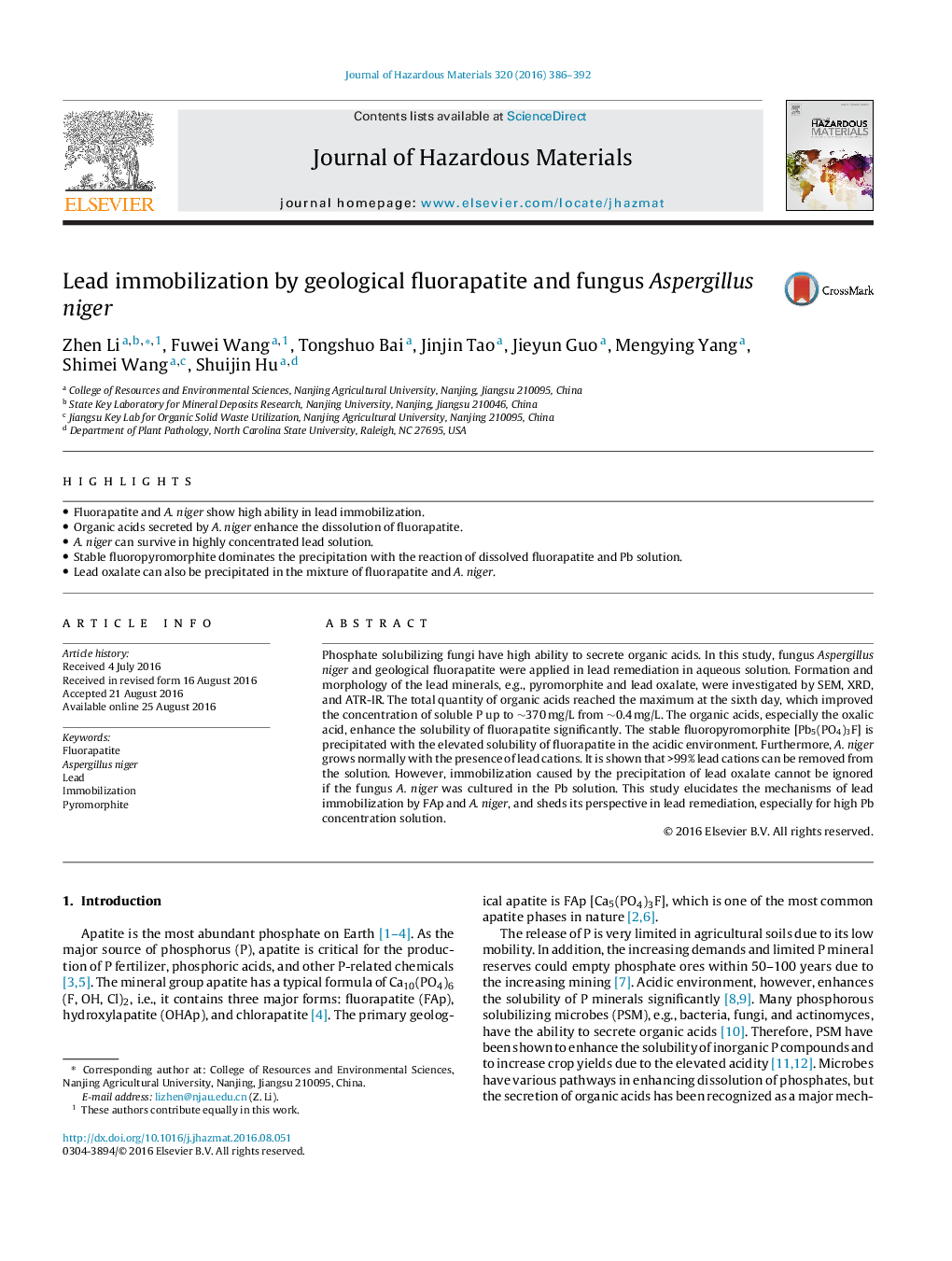| Article ID | Journal | Published Year | Pages | File Type |
|---|---|---|---|---|
| 6969610 | Journal of Hazardous Materials | 2016 | 7 Pages |
Abstract
Phosphate solubilizing fungi have high ability to secrete organic acids. In this study, fungus Aspergillus niger and geological fluorapatite were applied in lead remediation in aqueous solution. Formation and morphology of the lead minerals, e.g., pyromorphite and lead oxalate, were investigated by SEM, XRD, and ATR-IR. The total quantity of organic acids reached the maximum at the sixth day, which improved the concentration of soluble P up to â¼370Â mg/L from â¼0.4Â mg/L. The organic acids, especially the oxalic acid, enhance the solubility of fluorapatite significantly. The stable fluoropyromorphite [Pb5(PO4)3F] is precipitated with the elevated solubility of fluorapatite in the acidic environment. Furthermore, A. niger grows normally with the presence of lead cations. It is shown that >99% lead cations can be removed from the solution. However, immobilization caused by the precipitation of lead oxalate cannot be ignored if the fungus A. niger was cultured in the Pb solution. This study elucidates the mechanisms of lead immobilization by FAp and A. niger, and sheds its perspective in lead remediation, especially for high Pb concentration solution.
Related Topics
Physical Sciences and Engineering
Chemical Engineering
Chemical Health and Safety
Authors
Zhen Li, Fuwei Wang, Tongshuo Bai, Jinjin Tao, Jieyun Guo, Mengying Yang, Shimei Wang, Shuijin Hu,
